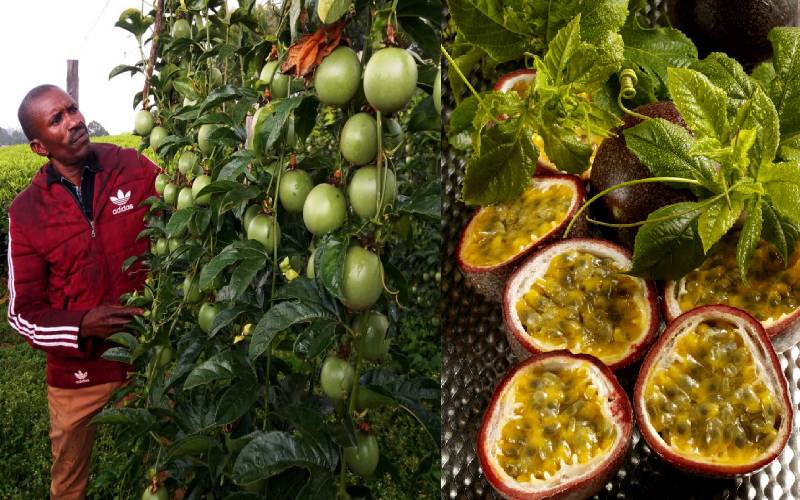
Elisha Lang'at inspecting his passion fruits at Teganda, Ndaraweta, Bomet County.
Passion fruit is a perennial vigorous plant that produces fruits within a year after planting. It is shallow-rooted, woody and climbs by means of tendrils. Passion fruit contains an acidic juice that is full of flavour. They can be processed for juice or eaten fresh. Common varieties of passion fruit are purple, yellow, giant and banana. Like other citrus fruits, it is rich in antioxidants, fibre and low in calories. John Munene grows passion fruits in Thika and shares valuable lessons on production and marketing.







